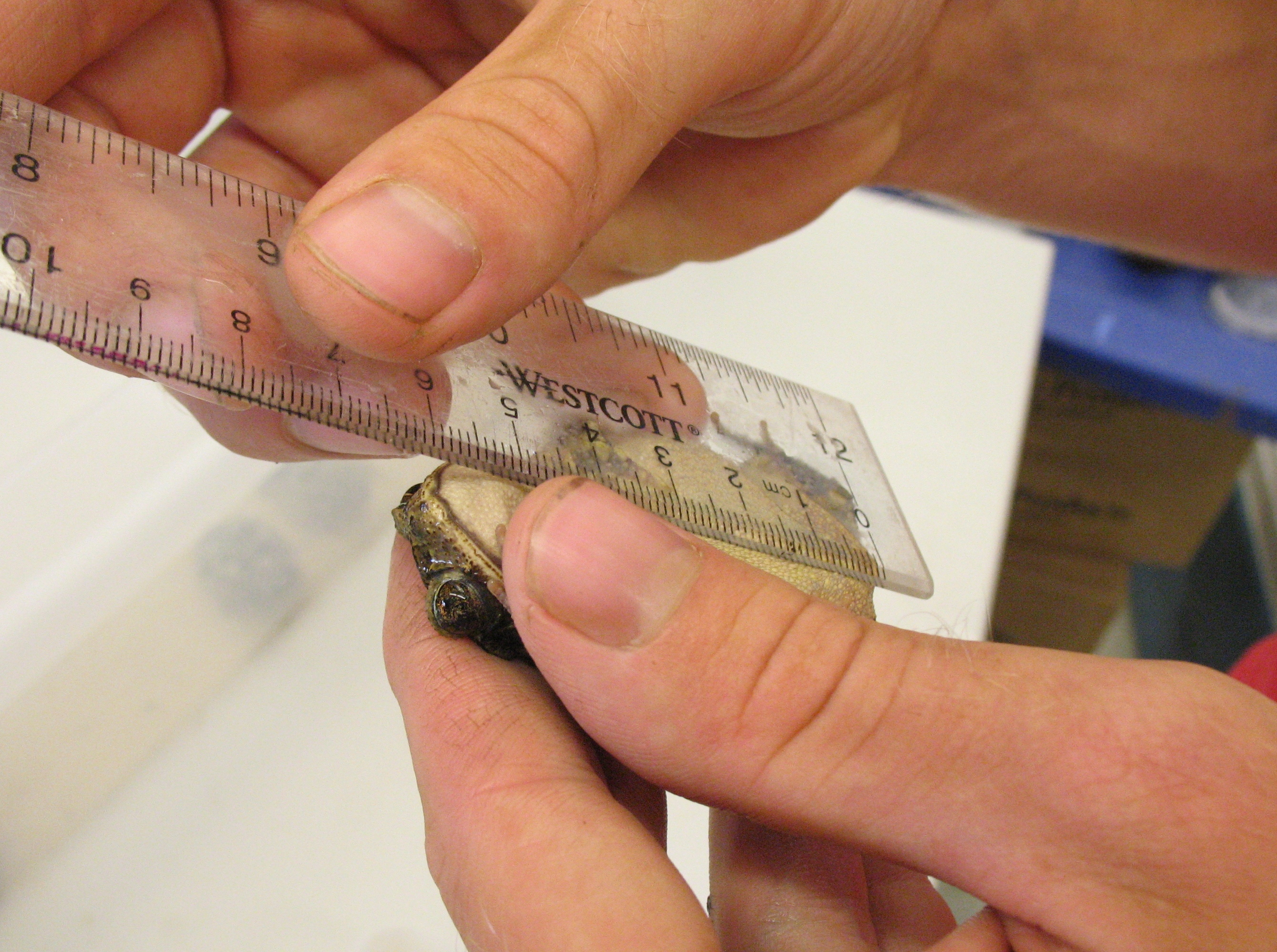Snout–vent Length on:
[Wikipedia]
[Google]
[Amazon]
 Snout–vent length (SVL) is a morphometric measurement taken in
Snout–vent length (SVL) is a morphometric measurement taken in
 Snout–vent length (SVL) is a morphometric measurement taken in
Snout–vent length (SVL) is a morphometric measurement taken in herpetology
Herpetology (from Ancient Greek ἑρπετόν ''herpetón'', meaning "reptile" or "creeping animal") is a branch of zoology concerned with the study of amphibians (including frogs, salamanders, and caecilians (Gymnophiona)) and reptiles (in ...
from the tip of the snout
A snout is the protruding portion of an animal's face, consisting of its nose, mouth, and jaw. In many animals, the structure is called a muzzle, Rostrum (anatomy), rostrum, beak or proboscis. The wet furless surface around the nostrils of the n ...
to the most posterior opening of the cloacal slit (vent)."direct line distance from tip of snout to posterior margin of vent" It is the most common measurement taken in herpetology, being used for all amphibian
Amphibians are ectothermic, anamniote, anamniotic, tetrapod, four-limbed vertebrate animals that constitute the class (biology), class Amphibia. In its broadest sense, it is a paraphyletic group encompassing all Tetrapod, tetrapods, but excl ...
s, lepidosaurs, and crocodilia
Crocodilia () is an order of semiaquatic, predatory reptiles that are known as crocodilians. They first appeared during the Late Cretaceous and are the closest living relatives of birds. Crocodilians are a type of crocodylomorph pseudosuchia ...
ns (for turtles, carapace length (CL) and plastral length (PL) are used instead). The SVL differs depending on whether the animal is struggling or relaxed (if alive), or various other factors if it is a preserved specimen. For fossils, an osteological correlate such as precaudal length must be used. When combined with weight and body condition, SVL can help deduce age and sex.
Advantages
Because tails are often missing or absent, especially in juveniles, SVL is seen as more invariant than total length. Even in the case of crocodiles, tail tips may be missing.Methods
The measurements may be taken with dial calipers or digital calipers. Various devices are used to position the animal while the measurement is being taken, such as a snake tube, "Mander Masher", or a "Salamander Stick".References
Further reading
* * * Herpetology Measurement {{Measurement-stub